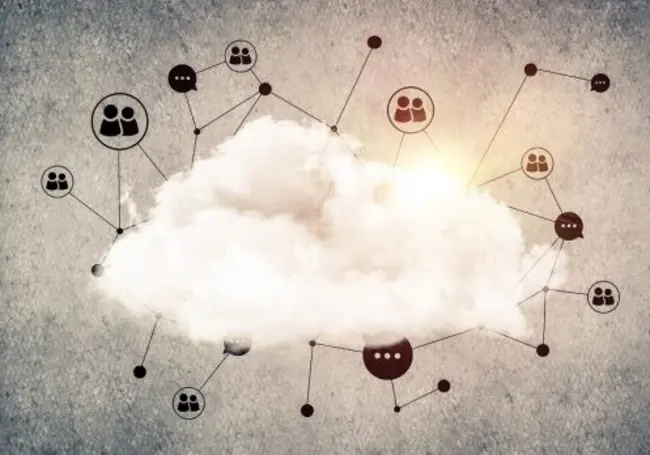

Richard Slater is a Principal Consultant for Amido.
Opinions expressed by EM360 contributors are their own.
Commoditisation through the Cloud, FaaS/Serverless Event-Driven Computing, Cloud to Edge and Industrial IoT (IIoT or Industry 4.0), Machine Learning and Artificial Intelligence help shape cloud services across all industries.
Commoditisation of IT started with the cloud. With this comes a standardisation which has allowed for inexpensive products to work well together within the cloud ecosystem, enabling them to be delivered at scale as well as opening the door to new technologies. Below, we discuss why this is a good thing and what it means for businesses thinking about pure cloud computing.
Why all the FaaS about Event-Driven Computing?
The launch of AWS Lambda in 2014 propelled attraction for the term Serverless/FaaS from outside the developer community. FaaS is a hot topic in the world of software architecture, but we have to remember that cloud computing enabled the creation of Infrastructure as a Service (IaaS), IaaS enabled the creation of Platform as a Service (PaaS) and PaaS enabled the creation of Software as a Service (SaaS) and the emerging Functions as a Service (FaaS) or Backend as a Service (BaaS) – known as Serverless Computing.
The business cost significance of FaaS can be huge as it is a commoditised function of cloud computing and one that takes away wasted compute associated with idle infrastructure, only paying for how much computing power an application consumes per millisecond. Instead of having an application on a server, the business can run it directly from the cloud allowing it to choose when to use it and pay for it, per task – thus making it event-driven. By 2020, Gartner says that 80% of digital business solutions and 80% of new business ecosystems will require support for event processing.
Despite there being a real appetite in the industry to reduce the cost of the cloud, not every business is going to be right for FaaS or serverless. Furthermore, FaaS means the ultimate vendor lock-in as it's not easy to move services from one cloud to another. Each cloud provider approaches FaaS in a different way and right now functions cannot be moved between vendors. In addition, we may be moving into a world of NoOps where applications run themselves in the cloud with no infrastructure and little human involvement for coding or testing (DevOps) - although they will be needed to automate the services. Paired with the advent of AI, the IoT and other technologies, business events can be detected quickly and analysed in greater detail; so enterprises should embrace ‘event thinking' and AWS Lambda Architectures as part of a digital landscape.
IoT and Cloud is Taken to the Edge: Industrial IoT (IIoT), Machine Learning and Artificial Intelligence
IoT has contributed to a serious rise in the types and amount of datasets generated and the proliferation of things connected to the internet has meant that there needs to be a way to aggregate, analyse and distribute that data from the ‘things' and send it back to the ‘things,' quicker. Conversations with clients are evolving across all industries with how machine learning (ML) and artificial intelligence (AI) will help drive intelligent business decisions and automate processes from these ‘things,' which means that Edge Computing is hugely important for all industries. Edge Computing technology collects data and processes it from nearby items to send it back to the cloud where analytics and machine learning can take place in order to make decisions - or make sense of the data - before sending the data back to the edge and then to the things – to make them more intelligent.
The next wave will be for the compute to move from the cloud towards the edge giving the objects the ability to make intelligent real-time decisions - such as a car needing to make a split-second decision on whether it should apply the brakes to avoid an accident. Currently, edge computing holds data analysed from the cloud that is immediately passed to the object for instantaneous updates and responses, and Cloud to the Edge data distribution is essential to improve customer experience in industries like manufacturing, health and retail, which brings us to Industrial IoT (IIoT).
The majority of the 6.4 billion data-communicating objects in the world today are smart machines (cars, appliances/white goods and industrial assets) which constitute the IIoT – and this number is set to triple by 2020 according to Accenture. Smart machines have a multitude of sensors, automation proficiency and machine-to-machine communication to enable data-driven manufacturing, where process and floor-wide monitoring are able to optimise efficiency and quality within the supply chain (through the application of machine learning to big data). This is being heralded as the revolution that will introduce huge productivity boosts to industry and the UK's first state of the art Factory 2050 will facilitate the fourth industrial revolution (Industry 4.0), meaning the potential for Edge Computing within IIoT is accelerating.
An important part of IIoT is that machines can cause harm and robots need to know when humans are close and slow down to protect them. Yet, humans will benefit from sensors within a factory or at a hospital, for instance. Fujitsu's UBIQUITOUSWARE takes in an immersed reality with its products that enable humans to do a better job with the use of real-time analytics and data collected from other scenarios. If you fell in the factory or if there's a potential danger, edge technology and sensors can feed and receive this information directly to and from the worker.
For businesses wanting to make use of data - structured and unstructured – to stimulate intelligent decisions and spot trends at the macro and micro level - it's time to focus on data engineering, data lakes and ML in a practical way, identifying data sets that would provide the most benefit from building a machine learning capability. Furthermore, businesses need to adopt viable cloud services that will benefit the business in the long-term – and already conversations with organisations are shifting to how all these technologies will enable better cloud performance without breaking the bank.







Comments ( 0 )